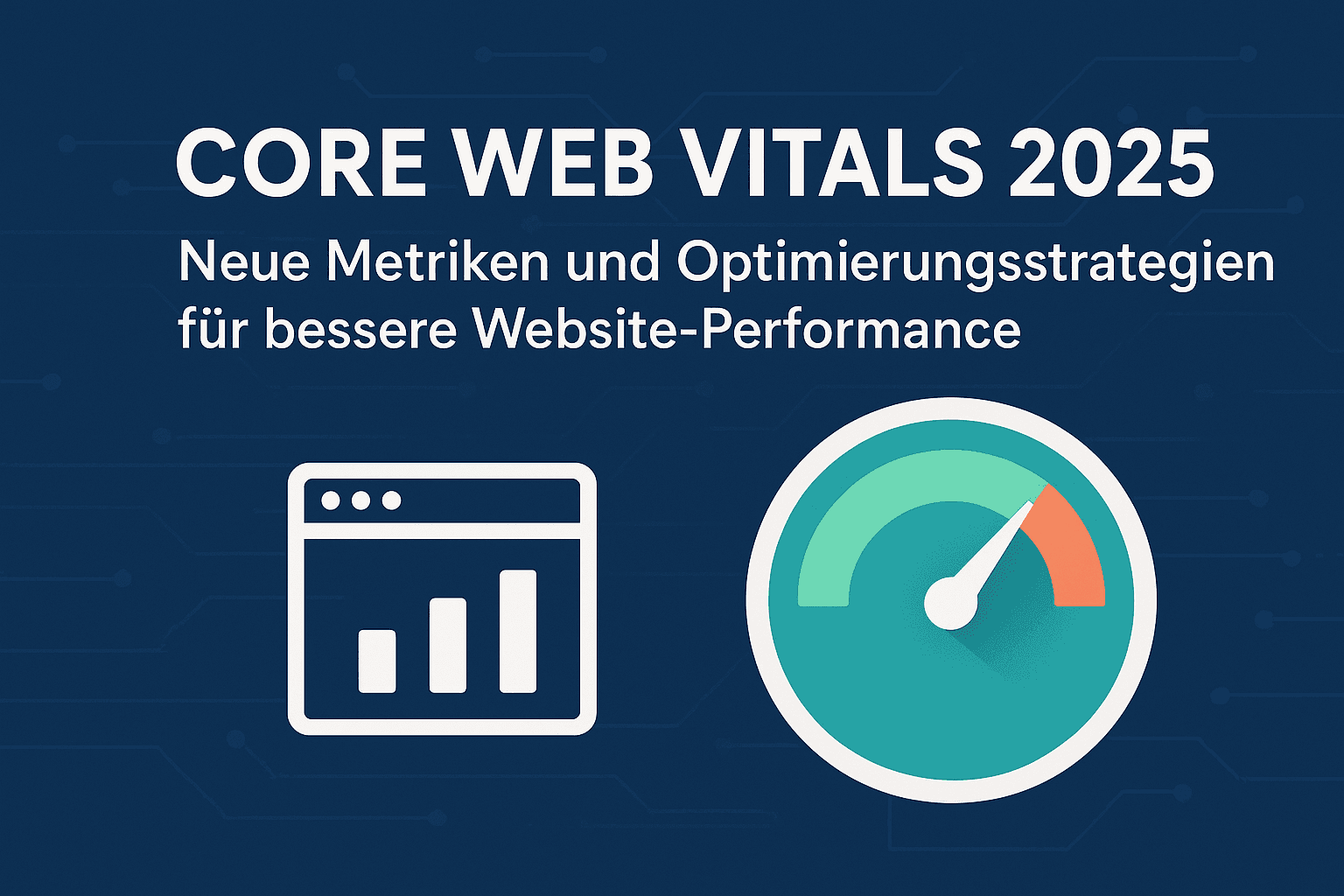Core Web Vitals 2025: New Metrics and Optimization Strategies for Better Website Performance
Google has expanded the Core Web Vitals for 2025 and introduced new performance metrics. For businesses, this means: Those who don't act now risk worse rankings and lose valuable visitors. Here you'll learn everything about the new metrics and how to optimally prepare your website for them.
What are the new Core Web Vitals 2025?
Google is expanding the known metrics LCP, FID and CLS with important new factors:
- Interaction to Next Paint (INP): Replaces First Input Delay (FID) as the main metric for interactivity
- Time to First Byte (TTFB): Server response times are weighted more heavily
- Total Blocking Time (TBT): Measures how long the main thread is blocked
- Speed Index: Evaluates how quickly content loads visually
These new metrics make performance optimization more complex, but also more precise.
Interaction to Next Paint (INP): The New Standard
INP replaces FID and measures the complete latency of user interactions:
What is measured:
- Time from user action to visual response
- Response times to clicks, keyboard inputs and touch gestures
- Entire rendering pipeline, not just the first response
Optimal values:
- Good: under 200ms
- Needs improvement: 200-500ms
- Poor: over 500ms
Optimization strategies for INP:
- Reduce JavaScript bundles and implement code splitting
- Optimize event handlers and use debouncing
- Use Web Workers for heavy calculations
- Lazy loading for non-critical resources
Proven Optimization Strategies for all Core Web Vitals
1. Improve Largest Contentful Paint (LCP):
- Images with modern formats (WebP, AVIF) and responsive images
- Preloading for critical resources
- CDN for global speed optimization
- Implement Server-Side Rendering (SSR)
2. Minimize Cumulative Layout Shift (CLS):
- Define fixed dimensions for all media elements
- Optimize font-display properties
- Skeleton screens instead of dynamically loaded content
- CSS Grid and Flexbox for stable layouts
3. Optimize Time to First Byte (TTFB):
- Choose high-performance hosting solutions
- Optimize database queries
- Implement caching strategies
- Use edge computing
Technical Implementation and Tools
Measurement and Monitoring:
- Google PageSpeed Insights for regular checks
- Chrome User Experience Report for real user data
- Web Vitals Extension for live monitoring
- Lighthouse for detailed analyses
Developer Tools:
- Monitor Core Web Vitals in Google Search Console
- Implement Real User Monitoring (RUM)
- Define and enforce performance budgets
- Integrate automated testing in CI/CD pipelines
Framework-Specific Optimizations
Next.js Optimizations:
- Image component for automatic optimization
- Dynamic imports for code splitting
- Static Site Generation (SSG) where possible
- Middleware for edge computing
React Performance:
- React.memo and useMemo for expensive calculations
- Virtualization for long lists
- Use Concurrent features
- Bundle analyzer for code optimization
Vanilla JavaScript:
- IntersectionObserver for lazy loading
- RequestAnimationFrame for smooth animations
- Event delegation instead of multiple event listeners
- Module pattern for better code organization
Impact on SEO and Business
Ranking factors 2025:
- Core Web Vitals are weighted more heavily
- Mobile-First indexing is intensified
- User Experience signals gain importance
- Page Experience Update affects all industries
Business Impact:
- 100ms delay = 1% revenue loss (Amazon study)
- 53% of mobile users leave slow pages
- Better Core Web Vitals = higher conversion rates
- Improved User Experience leads to longer sessions
Practical Checklist for 2025
Immediately actionable:
- [ ] Check current Core Web Vitals in Google Search Console
- [ ] Compress images and use modern formats
- [ ] Remove unnecessary plugins and scripts
- [ ] Activate and configure caching
Medium-term:
- [ ] Implement code splitting and lazy loading
- [ ] Optimize database and server performance
- [ ] Set up CDN
- [ ] Add Progressive Web App features
Long-term:
- [ ] Consider migration to modern frameworks
- [ ] Develop edge computing strategies
- [ ] Define performance budget
- [ ] Build monitoring and alerting
Conclusion
The Core Web Vitals 2025 set new standards for website performance. Companies that invest in optimization now gain decisive competitive advantages. With the right tools, strategies, and a systematic approach, all metrics can be successfully optimized.
The future belongs to fast, responsive websites – and the time to act is now.
